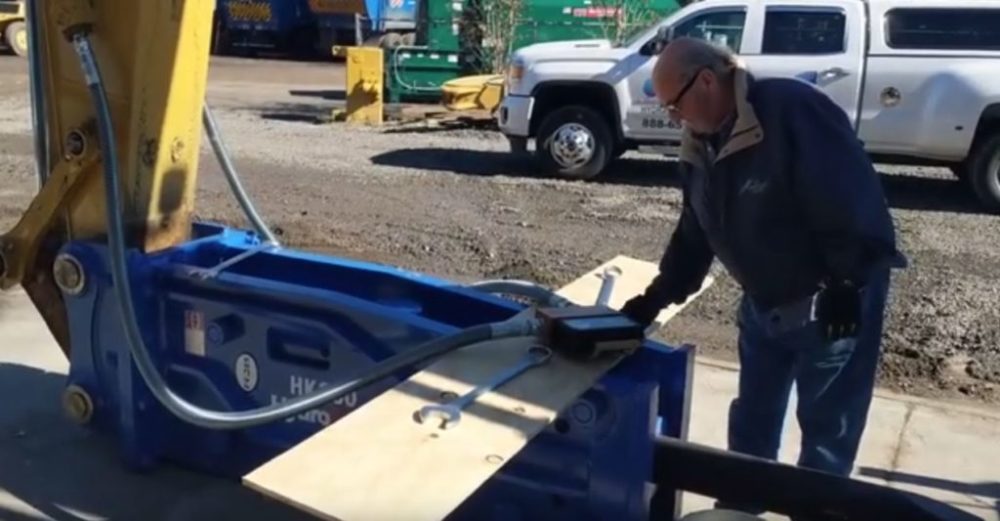
Industry-standard hydraulic hammers are powered with charged nitrogen over hydraulic fluid. In order to optimize the hydraulic power component, a hydraulic flow meter should be set up on the machine that is being attached to the hydraulic hammer. The machines typically attached to a hydraulic hammer are either a skid steer, mini-excavator, loader backhoe or Excavator.
These machines are sent into the field with a standard flow rate already set by the manufacturer to hook up to attachments like hydraulic hammers. However, more often than not the flow rate is not optimized for the particular brand of the hydraulic hammer that is being attached to the machine. Flow Testing can quickly diagnose if there are issues with the machine’s hydraulic pump(s), regulator valve, shutoff valve, or even the operator control panel.
With hydraulic fluid flow rate/pressure, there is typically an acceptable minimum and maximum range provided by the hydraulic hammer manufacturer. Too little flow and the hydraulic hammer will hit slow and not be effective in hitting. Too much hydraulic fluid flow and the hydraulic hammer will hit too rapidly and be susceptible to internal damage and costly repairs. As previously mentioned, the pressure at which the hydraulic fluid runs thru the hydraulic hammer can also give you an indicator of the health of the machine attached to the hydraulic hammer. Optimizing the machine prior to attaching a hydraulic hammer will save both time and money down the road.
If the hydraulic fluid temperature is too cold, you will not get an accurate reading on your flow meter (ideal running conditions are about 100 degrees for testing). If the temperature of the fluid becomes too hot, the oil loses viscosity and the hydraulic hammer will have less impact power.
Also, never operate a Hydraulic Hammer without knowing the system pressure of the Auxillary Circuit. For HydroRam models, the recommended relief values are as follows:
HK10 thru HK45 – 2200 PSI / HK60 – 2500 PSI / HK80-HK130 – 2900 PSI / HK220 – HK580 – 3000 PSI
These are the basics when flow testing a newly attached hydraulic hammer to a machine. There are additional considerations when selecting the type of flow meter, operating conditions, use of the hydraulic Hammer | Breakers, and others.
In the end, it’s always recommended to flow test a machine prior to setting up a hydraulic hammer as it can help improve performance and reduce overall maintenance costs.
To watch an actual Hydraulic Hammer | Breaker flow test click on the following link: https://youtu.be/Lkf2AifLN8E
